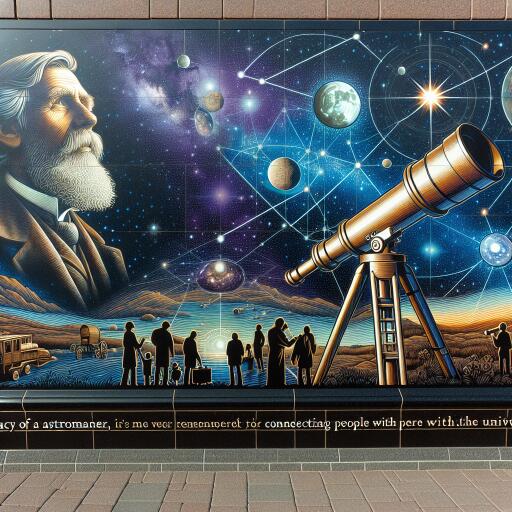Pioneering Nova Scotia Astronomer Celebrated for Bridging the Cosmos and Community
In a world where the stars often seem just out of reach, one Nova Scotia astronomer dedicated his life to making the cosmos accessible to all. David Lane, renowned for developing the world’s first social media-controlled telescope at Saint Mary’s University in Halifax, passed away after a courageous battle with brain cancer. Born in Germany in 1963 and raised in Hebbville, N.S., Lane’s journey in astronomy left an indelible mark on the field.
For nearly three decades, starting in 1992, Lane served at Saint Mary’s University, first stepping into the role of system administrator within the astronomy and physics department, before taking the helm as the director of the Burke-Gaffney Observatory. It was here, through his innovative spirit and technical expertise, that Lane would pioneer an initiative that brought the universe closer to people worldwide.
Lane’s groundbreaking work involved writing the code and creating the robotic infrastructure that permitted the observatory’s telescope to be manipulated through social media platforms. This technological marvel opened a window to the stars for enthusiasts across the globe, inviting people from diverse backgrounds to gaze into the depths of space from the comfort of their homes. “His work fundamentally transformed our engagement with the celestial sphere, encouraging a dialogue between the cosmos and the community,” shared Rob Thacker, a colleague and professor in the university’s astronomy and physics department.
The significance of Lane’s contributions to astronomy and public outreach was recognized widely, culminating in Saint Mary’s University bestowing upon him an honorary doctorate in science in 2024. His passion for the stars went beyond academia, with Lane playing an active role in the Royal Astronomical Society of Canada, where he served as national president for two terms between 2008 and 2013. Furthermore, his keen eye contributed to the first Canadian discovery of supernovas from within the nation, alongside RASC member Paul Gray.
Friends and colleagues remember Lane as someone who was deeply committed to not just astronomy, but also to fostering a sense of wonder and curiosity about the universe in people of all ages. Dave Chapman, longtime friend and RASC member, reminisced about Lane’s unparalleled passion for astronomy. “He lived, breathed, and slept astronomy,” Chapman said, reflecting on Lane’s dedication.
Mary Lou Whitehorne, honorary president of the Halifax chapter of the RASC and past national president, highlighted Lane’s zeal for community engagement. Lane was instrumental in organizing visits to the observatory, enriching the experiences of countless children and adults with the majestic beauty of stargazing. His belief in treating the planet as a life-support system rather than a mere rock in space was a philosophy he eagerly shared, particularly with the younger generation.
Outside the observatory, Lane shared his love of sailing with his wife, Michelle. The couple, active members of the St. Margaret Sailing Club in Glen Haven near their residence, enjoyed the thrill of racing across the waters, embracing the challenges posed by the winds and tides. Lane’s ability to captivate and involve others in his passions, from astronomy to sailing, was a testament to his engaging personality and zest for life.
As we look up at the night sky, we remember David Lane, not only for his technological innovations and scientific achievements but for the countless ways he inspired people to look beyond our world, to ask questions, and to dream. Lane’s legacy endures in every star that twinkles a little brighter and in every individual who now gazes up with a sense of wonder, thanks to his lifelong mission of connecting us all with the universe.








